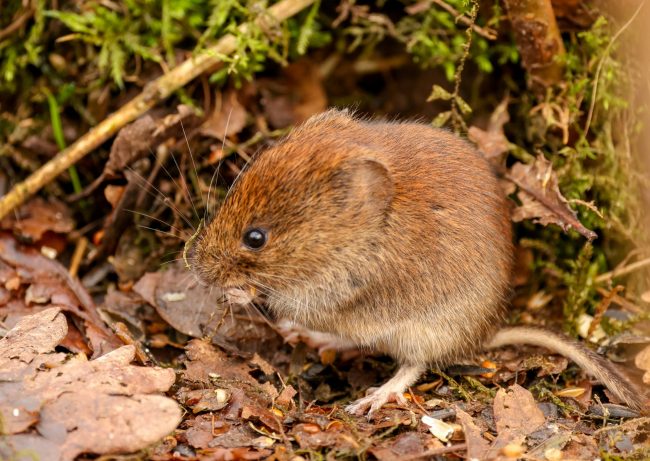
If your ground has not frozen yet, it is not too late to put protective fencing around trees and shrubs that often experience damage from deer, rabbit, vole, or mouse feeding over winter. Fruit trees, crab apples, burning bush, forsythia, dwarf Korean lilac, shrub hibiscus, low-growing junipers, and arborvitaes are among the plants that are most commonly damaged. Here at the Teaching Garden, we had voles chewing the bark off the bottom of the branches of low-growing forsythia and junipers.
One of the best materials to use for protecting your plants is ¼” mesh-size metal hardware cloth. The ¼” mesh-size hardware cloth is usually available in heights of 24” and 36” and can be purchased in rolls that are a number of feet long, at most home improvement stores. I prefer to use the 36-inch-tall mesh in case the snow is high; it also offers more protection against buck-rub deer damage on tree trunks. Chicken wire has holes large enough for voles and mice to slip through, so it is not as effective at preventing damage. Be sure to use gloves (preferably leather or thick rubber!) when handling the cut edges, as they are very sharp. You will need a pair of strong tin snips to cut the wire. Safety goggles are not a bad idea either, as the cut roll tends to snap back into a cylinder shape after being cut. Cut the hardware cloth so it is a couple of inches larger in diameter than the tree trunk or shrub, so it does not rub against the metal. The mesh should go around the plant in a cylinder shape. Make sure the mesh around the bottom of the trunk is flat to the ground and tight against it. Use sod staples (also called landscape stakes) that are U-shaped to pound through the holes in the mesh into the ground to prevent rodents from tunneling under the mesh. You can also mound a couple of inches of bark on top of the area where the wire and ground meet for extra protection. The edges around the sides of the cylinder can be fastened together with thin rubber-coated wire or short cable ties threaded through the mesh for easy removal in spring.
For some shrubs here at the Teaching Garden at the Extension Dane County office, we even screen over the top of the shrubs if deer have been an issue. Remove the cages in spring in April when the grass is starting to green up –it should provide an alternative and hopefully more palatable food source for the various critters.




